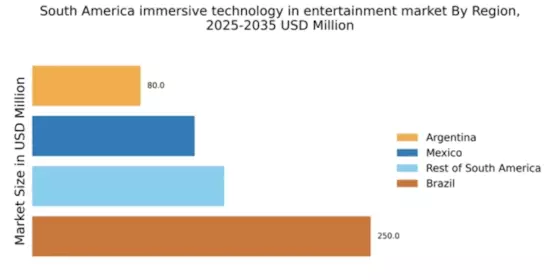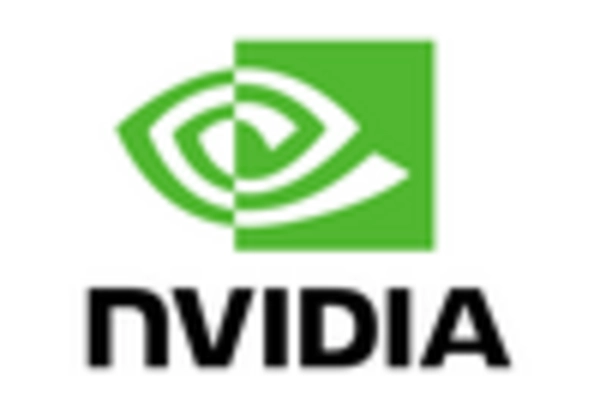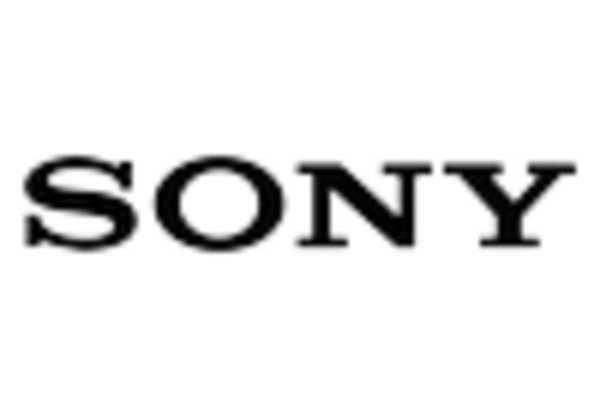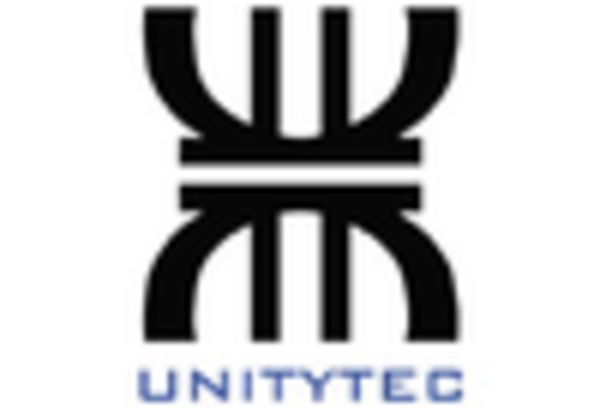Cultural Embrace of Interactive Storytelling
The cultural shift towards interactive storytelling is influencing the immersive technology-in-entertainment market in South America. Audiences are increasingly drawn to narratives that allow them to engage actively with the content, leading to a demand for immersive experiences that blend storytelling with technology. This trend is evident in the rise of interactive films and games that offer personalized experiences. As creators explore innovative ways to tell stories, the market is expected to expand, with interactive content projected to account for 30% of all entertainment consumption by 2027. This cultural embrace of interactive storytelling is likely to drive investments in immersive technologies, fostering a dynamic entertainment landscape.
Increased Accessibility of High-Speed Internet
The expansion of high-speed internet infrastructure across South America is significantly impacting the immersive technology-in-entertainment market. With improved connectivity, consumers can access high-quality streaming services and immersive content without interruptions. This accessibility is crucial for the adoption of VR and AR technologies, which often require substantial bandwidth for optimal performance. As of 2025, it is estimated that over 70% of urban households in South America have access to high-speed internet, facilitating the growth of online gaming and streaming platforms. Consequently, this trend is likely to enhance user engagement and drive revenue growth in the immersive entertainment sector.
Rising Consumer Demand for Immersive Experiences
The immersive technology-in-entertainment market in South America is witnessing a notable surge in consumer demand for engaging and interactive experiences. As audiences increasingly seek novel forms of entertainment, the market is projected to grow at a compound annual growth rate (CAGR) of approximately 25% over the next five years. This demand is driven by the proliferation of high-quality content and advancements in technology, which enhance user experiences. Furthermore, the growing popularity of virtual reality (VR) and augmented reality (AR) applications in gaming and entertainment sectors is reshaping consumer expectations. As a result, companies are compelled to innovate and invest in immersive technologies to meet these evolving preferences, thereby propelling the market forward.
Growing Interest in Esports and Competitive Gaming
The rise of esports and competitive gaming is emerging as a significant driver for the immersive technology-in-entertainment market in South America. With millions of viewers and participants, esports events are increasingly incorporating immersive technologies to enhance viewer experiences. The market for esports is projected to reach $1.5 billion by 2026, indicating a robust growth trajectory. This interest not only attracts investments from sponsors and advertisers but also encourages the development of immersive gaming experiences that captivate audiences. As a result, the integration of immersive technologies in esports is likely to create new opportunities for content creators and developers within the entertainment industry.
Technological Advancements in Hardware and Software
Technological advancements play a pivotal role in shaping the immersive technology in entertainment market in South America. Innovations in hardware, such as more powerful graphics processing units (GPUs) and affordable VR headsets, are making immersive experiences more accessible to a broader audience. Additionally, software developments, including enhanced graphics engines and user-friendly interfaces, are facilitating the creation of more sophisticated content. The market is expected to witness a growth trajectory, with hardware sales projected to reach $1 billion by 2026. These advancements not only improve the quality of immersive experiences but also lower entry barriers for content creators, fostering a more vibrant ecosystem within the entertainment industry.


















Leave a Comment